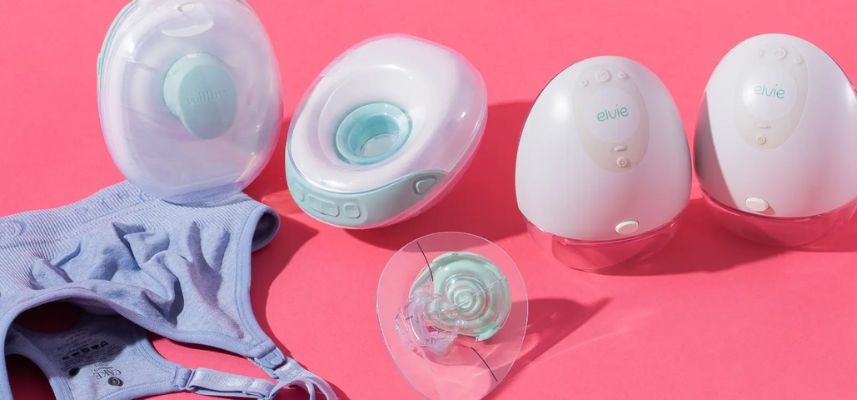There are many ways to prepare to breastfeed ahead of time, including reading books, taking prenatal classes, and purchasing breastfeeding and pumping supplies and equipment. However, the most important element of successful breastfeeding, getting your newborn to latch onto your breasts, can be very difficult to prepare for ahead of time. Both first-time mothers and moms who are experienced with breastfeeding can be thrown for a loop and challenged when trying to get their newborns to latch on. This is because every mother-baby dyad is different!
The key elements of “mastering the latch” include being in a comfortable position when breastfeeding, your baby needs to be awake and ready to feed when he or she is latching on (i.e. it can be really hard to latch on a baby who is too sleepy), for baby’s mouth to be as wide open as possible when latching, and for baby to have the entire areola of the breast, including both the nipple and darkly pigmented circular area of skin around the nipple, in their mouth while feeding.
Common Latching Challenges Include Pain & Shallow Latching
There is a lot of confusion as to whether or not latching during the early days of breastfeeding should hurt or not hurt. Some lactation consultants and experts claim that it’s normal for breastfeeding to initially hurt to some degree, but in others’ opinions breastfeeding should never be painful. I think the correct answer is that there is a spectrum of pain and discomfort during breastfeeding - women at one end of this spectrum experience painless breastfeeding, women at the other end are in pain just about every time they nurse, and most mothers find themselves somewhere in the middle during the first few weeks.
Our bodies release a hormone called oxytocin when we breastfeed, which is a powerful contractor of the muscles of the uterus. So it’s totally normal for new moms to experience uterine cramps, known as “after pains,” when their baby latches onto their breasts to feed. In these cases, “painful” breastfeeding has nothing to do with the quality of one’s latch and is a result of oxytocin release on the uterus.
True nipple pain during latching and breastfeeding is a whole different story! Many mothers’ nipples hurt during the early days of nursing as a result of improper latching. The most common latching problem causing pain is when a baby has too shallow of a latch, latching onto only the nipple of the breast, instead of the entire areola. One of the earliest “red flags” of a shallow latch is if you notice that your nipples are misshapen after your baby breastfeeds. For many women, the shape of their nipples will look like that of a half-used tube of lipstick after every feeding if their baby’s latch is not deep enough.
If no intervention happens and a newborn continues to have a shallow latch, mothers’ nipples develop skin breakdown and abrasions that bleed and can scab over. Nipple injuries like these cause there to be even more pain while breastfeeding, which can lead to a vicious cycle of breastfeeding – pain – breastfeeding – more severe pain, etc. In addition to nipple pain, shallow latching causes plugged milk ducts, can predispose one to mastitis, and lead to a low milk supply, with resultant poor weight gain and/or a baby who does not seem to be satisfied after feeding because they're not getting enough milk. Mothers who experience pain or sore nipples can also start to experience stress and feelings of dread while breastfeeding.
So, as you can see, it’s essential to get timely help from a lactation consultant if your newborn’s latch is too shallow to prevent problems with pain, nipple injuries, and breast milk supply. Breastfeeding support with a lactation consultant (CLC or IBCLC) should ideally happen during the first few days after birth, while still in the hospital, and then in the home setting for as long as needed.
Tips for Getting a Good Breastfeeding Latch
- When getting into position to breastfeed, place baby's nose to your nipple and let baby’s lips brush against the bottom half of your areola. This will activate your baby’s natural “rooting reflex” and they will open their mouth very wide as they latch.
- Be open to trying out various breastfeeding positions to find the ones that work best for you and your baby getting a good latch. Some babies are able to obtain a deeper latch with side-lying, while for others it’s during the football hold or in the cross-cradle position that they can get a deep latch.
- Using a nipple shield during breastfeeding can also help. A nipple shield is a clear, soft silicone sleeve that fits over your entire areolar region. Some babies are able to get a better latch when their moms use a nipple shield with nursing. With time many moms are able to “wean” from using a nipple shield as their babies grow and develop. There is controversy as to whether or not mothers who use a nipple shield need to pump after every breastfeeding session – if you decide to use a nipple shield, it’s important to have frequent “check-ins” with a lactation professional to help determine whether or not you should be pumping after breastfeeding with a shield.
- If your nipples are bleeding and excoriated, you may have to temporarily switch to pumping and bottle feeding to give them time to heal. Talk to a lactation professional or your healthcare provider about any concerns you have. Aeroflow Breastpumps can help you to get the best possible pump for free through your health insurance. Aeroflow Breastpumps also carries a wide variety of products to help overcome temporary nipple soreness, including lanolin cream, nipple shields, and hydrogel breast pads.











